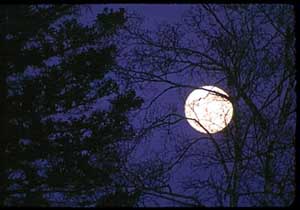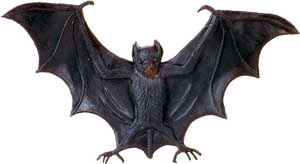-
- Mass. Legislature to begin debating gay marriage
- Clergy refuse to sign marriage licenses in protest
- Davis signs medical marijuana bill
- Supreme Court rejects Bush appeal over medical marijuana
- Washington state appeals court asked to reverse same-sex ‘divorce’
- Lambda Legal hits back at Marriage Protection Week
- National News Briefs
- World News Briefs
feature
Celtic festivals to drag queens
Published Thursday, 23-Oct-2003 in issue 826
Hallowe’en seems to have started off innocently enough as “Samhain” — “Summer’s End” — an ancient, pre-Christian Celtic festival in the British Isles and northern France observed around Nov. 1.The event marked the end of summer and the advent of the dark winter season, longer and darker in northwestern Europe than in most of the U.S. (Chicago is parallel to Barcelona and Rome, considerably south of London and Dublin).
In the early seventh century, western Catholicism established an All Saints Day to honor saints who did not have specific festival days — a kind of “ ... and Others Too Numerous to Mention” festival — to be celebrated on May 13. But in the mid- eighth century Pope Gregory III moved the day to November 1, and a century later Gregory IV ordered its church wide observance.
As so often with Christian customs and festivals (e.g., Christmas, Easter), whether in this case intentionally or not, the new holiday was superimposed on top of the older pagan one, creating a kind of cultural palimpsest: adding the new holiday but never entirely able to suppress elements of the older one. As C.S. Lewis observed, quoting a friend, the British have never been completely Christianized.
The original Celtic idea seems to have been that the separation between this world and the afterlife was most permeable at Samhain and the spirits of the deceased reentered this world with mischievous intent. This later developed into, or was overlaid with, the idea that the night before All Saints Day (All Hallows Eve) the evil spirits of the dead who had not made it into heaven escaped from their graves and roamed about creating havoc.
We could speculate that the idea of evil spirits also contained a cultural memory of the ancient Celtic gods. It was the standard practice of early Christianity where it could not totally extirpate older gods to try to tarnish and demean them by reinterpreting them as demons and evil spirits.
In fact, one of the rationalizing interpretations of the pious legends of Jesus’ driving demons out of people who believed in him is that he was simply converting them from pre-Christian polytheism to his version of monotheism, thus driving the older gods from the person’s mind.
However that may be, one account of the origin of dressing in costume at Hallowe’en traces it to the attempt to fool the mischievous spirits, to make it harder for them to play tricks. Alternatively, the later view involving evil spirits would account for the large number of people who dress as ghosts, ghouls, goblins, demons, skeletons or witches and go trick-or-treating, threatening to cause mischief unless bribed with candy.
In any case, it is easy to see how the idea of going about costumed as evil spirits in order to solicit bribes led to the notion of going out for the same purpose costumed as something less threatening, but nonetheless exotic — cowboys, pirates, fairies, cowboys, clowns, etc.
It is possible that the idea of dressing up as something one was not held particular appeal for adult gay men who felt forced to present themselves most of the time as something they were not.
The idea of pretense, the fact of pretense, was never far from the daily lives of most of our gay ancestors, so the idea of undisguised pretense, so to speak — pretense that was so exaggerated as to be obvious — was not only an amusement but, by its openness, probably a kind of relief. Dressing up for Halloween was pretense, the detection of which produced no harmful consequences for one’s life.
For many gay men, dressing in drag had a long if faintly disreputable tradition (e.g., in prostitution and the theater); a night generally devoted to costuming might have had great appeal as an excuse to dress in drag quite publicly, and get away with it, even in jurisdictions where cross-dressing was illegal. “But officer, for goodness sake, it’s Halloween.”
Hence — among all the other costumes — the wide array of fairies, queens, Mae Wests, Glenda the Good Witches, elaborate ball gowns, as well as more generic female costumes.
Drag costuming also provided a safe outlet for that most traditionally gay of sensibilities, camp, with its arch stylizations and parodistic exaggerations. That might account for the elaborate dresses, excess of sequins and glitter, grotesquely enlarged bustlines, and severe-looking nuns.
Taken together, these all revealed perhaps a little too clearly the complex attitude many gay men once had, not toward women as persons, but toward femaleness or femininity, which they were accused of embodying but to which they were not erotically attracted; which they found aesthetically interesting, but had difficulty taking entirely seriously.
Today, Halloween costuming, whether drag or otherwise, is a tradition that continues under its own momentum. No longer an attempt to fool demons and ghosts, or a reaction of gay men to a hostile culture, it is more like an elaborate attention-seeking device. More, that is, like modern life.
|
|
Copyright © 2003-2025 Uptown Publications



